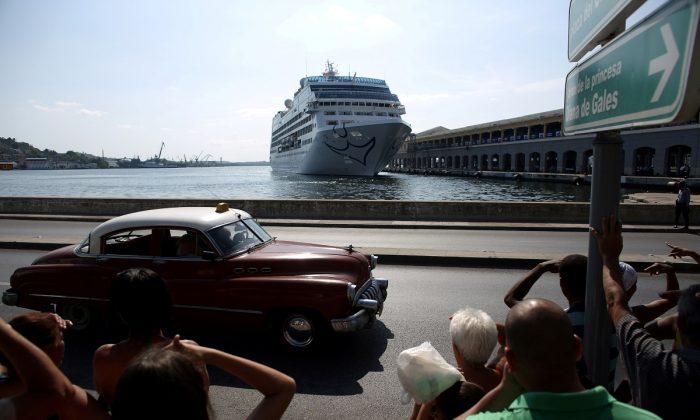HAVANA—The Trump administration on June 4 imposed heavy new restrictions on U.S. travel to Cuba, including a ban on cruises, in a further bid to pressure the island’s Communist government to reform and end its support for Venezuela’s illegitimate dictator Nicolas Maduro.
The tightening of the decades-old U.S. embargo on one of the world’s last remaining communist regimes will further wound its crippled economy.
The State Department said the United States will no longer permit visits to Cuba via passenger and recreational vessels, including cruise ships and yachts, as well as private and corporate aircraft.
The United States also will no longer allow so-called group people-to-people educational travel, one of the most popular exemptions to the overall ban on U.S. tourism to Cuba. Travel experts said some groups may get around that by instead using one of the 11 other categories still allowed.
The administration of President Donald Trump had announced the new restrictions in April, as part of its rollback of the U.S.-Cuban detente of former President Barack Obama and its broader battle against socialism in Latin America.
“The Administration has advanced the President’s Cuba policy by ending ‘veiled tourism’ to Cuba and imposing restrictions on vessels,” said a tweet from Trump’s national security adviser John Bolton, who has led the U.S. campaign against what he has called the “troika of tyranny” of Cuba, Venezuela and Nicaragua.
“We will continue to take actions to restrict the Cuban regime’s access to U.S. dollars.”
Cuba’s President Miguel Diaz-Canel said the island won’t be intimidated.
“They have not been able to asphyxiate us, they will not be able to stop us, we will continue to live and we will conquer,” he wrote on Twitter.
This is the second time the Trump administration has tightened U.S. travel restrictions on Cuba.
The Trump administration is hitting the two areas of the economy—tourism and investment—that have helped Cuba keep the economy afloat even as it has faced declining Venezuelan aid and exports in recent years.
Last month, the administration allowed U.S. lawsuits against foreign companies for the use of property confiscated after Cuba’s 1959 revolution.
Meanwhile, U.S. travel to Cuba had boomed in recent years after Obama loosened restrictions, allowing the re-establishment of regular commercial flights and cruise services.
The United States became the second-largest source of travelers to the island after Canada, with a majority arriving on cruise ships.
According to the Cuban government, 257,500 U.S. citizens, not including those of Cuban origin, visited Cuba from January through March, with 55 percent arriving on cruise ships.
But critics of the Cuban government said much of this travel wasn’t for educational but rather for recreational purposes, which contradicted the ban on tourism.
Carnival and Royal Caribbean, which both offer cruises to Cuba, didn’t immediately reply to requests for comment. Norwegian Cruise Line said it was “closely monitoring these recent developments and any resulting impact to cruise travel to Cuba.”
Cuba travel experts say U.S. travel to Cuba will still be possible, even if not via cruises.
“There are still a number of ways to legally visit Cuba,” said Collin Laverty, president of Cuban Educational Travel, which brings hundreds of groups to Cuba every year. “Commercial flights were left intact and any previously made reservations can go forward.”





